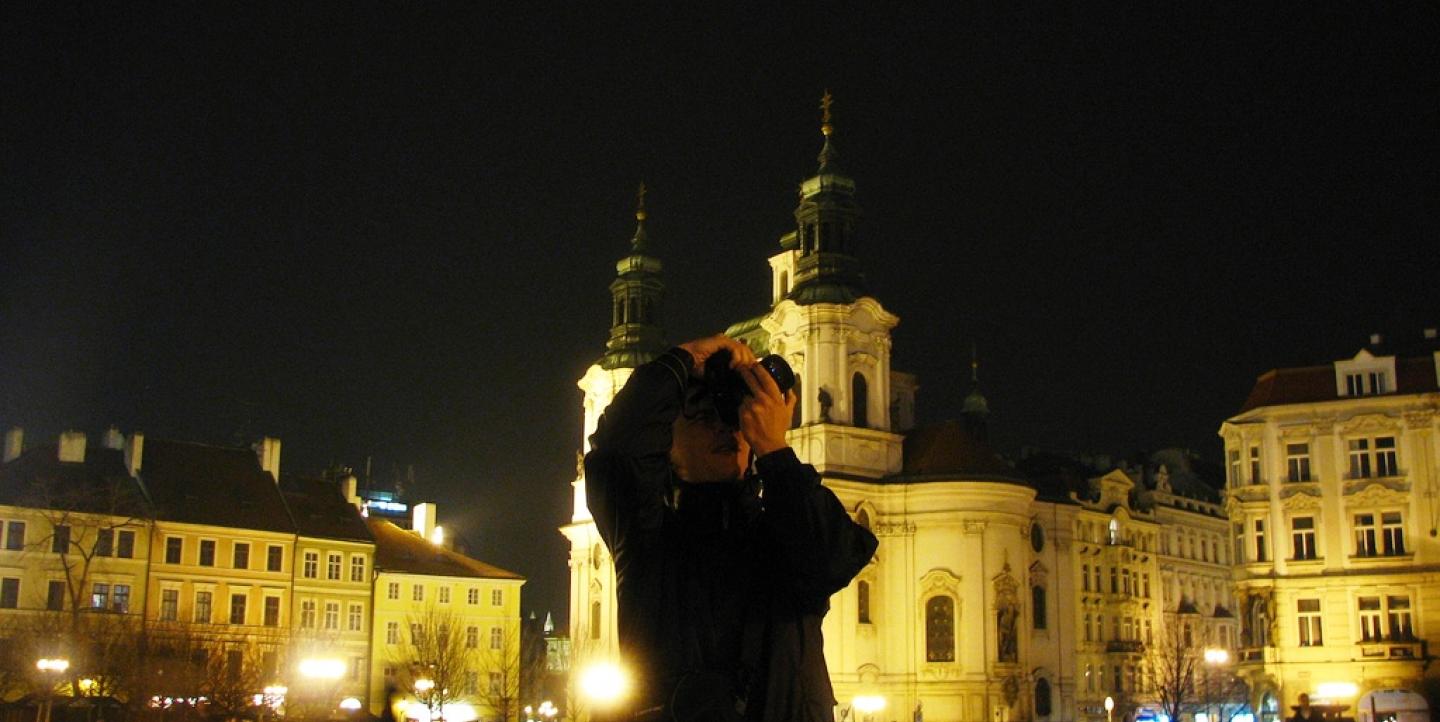There are many ways to make oneself less intimidating as a photojournalist. Some of it involves doing your research, being aware of your environment, dressing casually and smiling a lot. It also involves how photojournalists handle and introduce themselves with their cameras. On higher-risk assignments, taking these steps is especially important.
IJNet caught up with Gianluigi Guercia, an AFP photographer based in South Africa; Cynthia Matonhodze, a documentary photographer in Zimbabwe; and Tsvangirayi Mukwazhi, an Associated Press photographer in Zimbabwe, who shared their personal takes on some of the commonly used ways of being less intimidating with a camera.
Shooting from the hip
With this technique, the photographer takes pictures while the camera hangs around the waist or hip area, with the hope of capturing the subjects without raising the camera. Some photojournalists feel that holding a camera in one’s face is similar to the position of a sniper holding a gun, and thus could intimidate their subjects.
Guercia: I have done that a few times. I would avoid it if I can. I don’t feel it’s a realistic way of being less threatening. If your subject feels threatened by the camera, that means that there is something wrong in that relationship.
Keeping your camera in your bag until you start shooting
Hanging the camera around the neck can easily scare away people who do not know your intention or why you are carrying a camera. In some cases, however, carrying a camera around can communicate that you are a journalist and thus enable you to gain access to shoot.
Mukwazhi: It depends on the territory that one operates in, as these determine whether you want to be conspicuous or not. What’s important for me is communication, which I believe is key; most importantly, your instinct is your ultimate guide. Some will keep their camera in the bag until the crunch moment. This helps sometimes but can also get you into trouble.
Carrying less gear
Carrying lots of expensive gear can in some cases make you look almost military and intimidating. Being simple and carrying less gear can make it easier for subjects to relate to you.
Matonhodze: I think the first step is knowing your gear and understanding which lens you will need for a particular assignment. This means you need to practice and experiment. Sometimes you won't have the luxury of choosing which gear to carry and will have to make do with what you have so you will need to be creative. You will need to move your feet and get the most out of what you have.
Using a camera phone instead
At times, using your phone can make you seem harmless and less intimidating. People may think you are an ordinary person who just wants to take pictures. This also comes in handy when your subjects are not used to huge DSLR cameras.
Mukwazhi: Using your phone can be very dangerous, especially in demonstrations. Crowds tend to view those using phones as spies or CIO and hence you can be a target. It’s unlike when you are all out with your full gear and people identify you as the press.
Showing potential subjects your pictures
Showing your subjects some of your pictures can make them better understand what you are all about. When they are able to see pictures of themselves, they can at least have a more vivid idea of what you are doing.
Matonhodze: I generally carry around small prints of projects I have done to show potential subjects the work I do. However, when I am granted access to photograph the person and start shooting, I keep some images of them that I have shot in my CompactFlash card to show people who approach me when I am shooting. Oftentimes, I shoot my subjects in public spaces where they work, so some people might approach me when I am shooting and demand to know what I am doing.
Final tips
Tsvangirayi: The best method is to communicate with your subjects and let them know what you are doing. If they are not comfortable, then don’t force it; move on.
Guercia: I try to be cordial and introduce myself first when there is the possibility of doing that. I like to tell people why I’m there and what I’m about to do. I don’t hide the fact that I’m a photographer and I’m there to take pictures. People respond better to an honest statement than a person who starts shooting randomly before a proper introduction.
Matonhodze: I generally think that you cannot separate the camera from the person using it. What you do as a photographer helps or hinders your access to a space or person, no matter what you do to make your camera less intimidating.
Main image CC-licensed by Flickr via Andreas Gohr.

